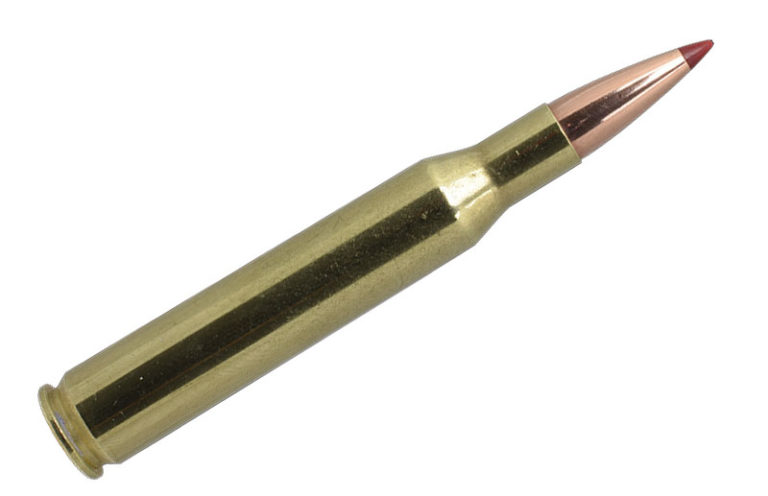
There’s a wide variety of .270 Winchester ammo out there, contributing to the cartridge’s reputation for versatility, but it’s only useful if you know how to pick the right load.
There are only a few cartridges as common or as versatile as .270 Winchester. It can be found virtually anywhere, has bagged game all over the world and remains a top seller amongst the full-power rifle cartridges … for good reason.
Today we’ll be going over just what makes this cartridge so great, its best applications and a few top-notch loads of factory .270 Winchester ammo.

.270 Winchester Development
The .270 Winchester, or under its original name .270 Winchester Center Fire or WCF, was first released in 1925 with the (then) new Winchester Model 54 bolt-action rifle, in the time-honored industry tradition of inventing a new gun and a new bullet to shoot with it.
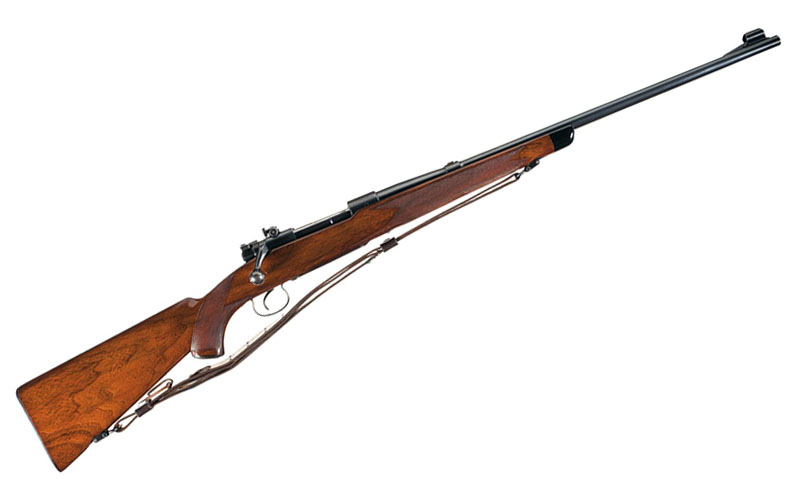
The cartridge was devised by necking down the .30-03 Springfield (not .30-06, although .30-03 is the parent case of both) to accept a .277-inch diameter (6.8mm) bullet.
The original factory load was a 130-grain bullet at 3,140 feet per second (around 3,060 fps is more common now) and it was soon noted for kicking less and dropping a little less at longer range (especially between 300 to 500 yards) as the more popular .30-06.
Those qualities endeared it to the hunting gun writers of the day such as Townsend Whelen and most certainly Jack O'Connor.
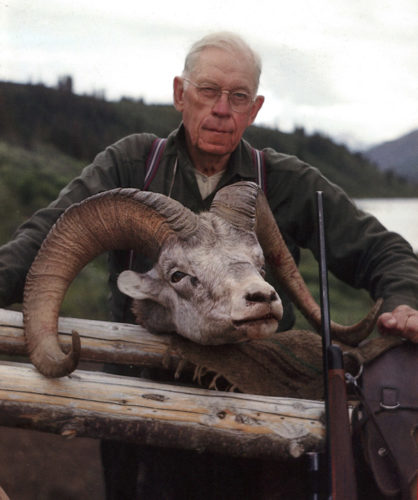
The buying public took a little while to catch on, but eventually, rifle hunters in the U.S. (especially in the western states) and elsewhere noted its qualities. O'Connor's tireless advocation for the cartridge and for the Winchester Model 70 rifle (which replaced the Model 54) certainly helped as well.
Today, it's still one of the most common hunting cartridges worldwide. It's found on every continent besides Antarctica and has harvested pretty much every game species you can name.
What's So Great About .270 Winchester?
The only real ding against .270 Winchester is that it has poor (almost zero) support in semi-autos. Primarily used in bolt-actions, however, the cartridge is great at doing bolt-action things.
Even when zeroed at 100 yards, it drops less from 100 to 400 yards than .30-caliber stalwarts like .308, .30-06 and .300 Winchester Magnum.

The 130-grain loads of .270 Winchester ammo (historically the most popular) produce about 16.5 foot-pounds of recoil in an 8-pound rifle, marginally less than a 150-grain .30-06 bullet fired from a rifle of the same weight. Although it’s also about 4 foot-pounds less than the 165- and 180-grain loads of .30-06.
The difference is enough to notice, but not dramatic.
The bullet shape (long and thin, but just substantial enough) gives the bullet a slightly higher sectional density and ballistic coefficient compared to a larger diameter bullet of the same grain weight. For instance, a 150-grain Sierra Game King in .277 caliber has a G1 BC of .483 and sectional density of 0.279, compared to 0.226 and .368 (respectively) in .308 caliber.
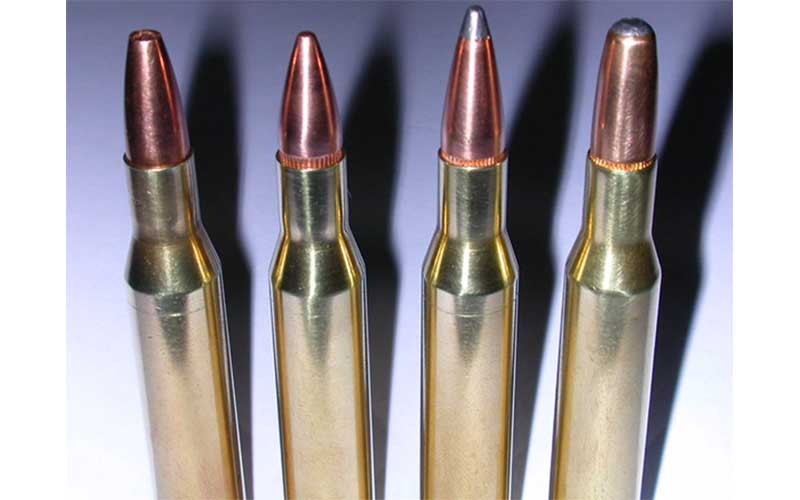
However, modern heavy-for-caliber bullets can provide an even higher BC for .270 Winchester ammo. Examples include Sierra's Tipped Game King 175-grain bullet with a nominal G1 BC of 0.560, Nosler Accubond LR 150-grain bullets with a G1 BC of .625 and Berger's 170-grain EOL bullet with a G1 BC of 0.662.
In other words, it overcomes air resistance better compared to .30-caliber bullets of the same grain weight. This results in a greater potential for penetration into vital areas.
While .270 Winchester ammo excels at distance, the 6.5mm and 6mm cartridge families still rule long-range shooting and high-power rifle events. While modern, high-BC heavy bullets can narrow the gap considerably, match .270 Winchester ammo doesn’t exist unless you load it yourself.
So, it may be one of the best medium-game cartridges ever made…but it’s not necessarily the best at everything.
Hunting With A .270 Winchester
There are arguably few finer cartridges for game hunting in open spaces. Besides a reputation for excellent accuracy and tolerable recoil, the other benefit .270 Winchester brings to the table is its only moderate drop at distance.
For the eastern U.S., where shot opportunities are usually well within 200 yards and game is smaller-bodied, it's a bit much. In the West, where shot opportunities can very easily be upwards of 400 yards, that's where .270 shines.
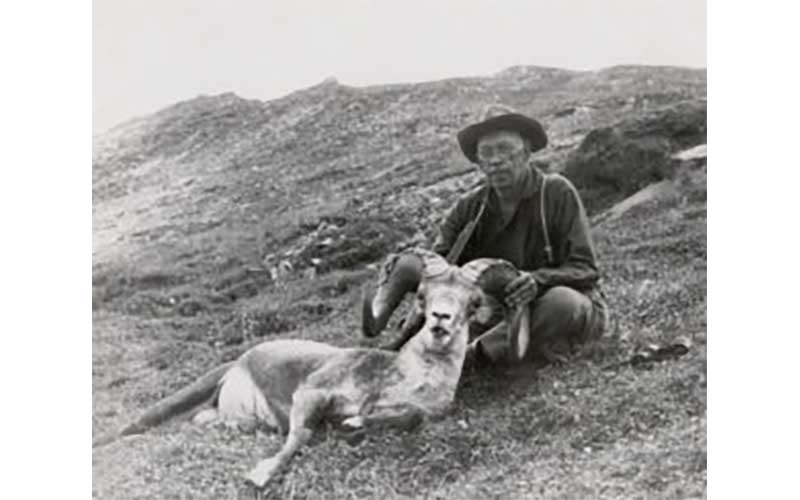
The cartridge has long-held a stellar reputation for accuracy.
Add manageable recoil, broad factory support (lots of companies make ammo) and favorable ballistics for medium to long-range shot opportunities, and it’s no wonder that .270 Winchester is still a go-to choice everywhere from the plains and mountains of the Western U.S. to the African savannah.
.270 Winchester Ballistics
To gain a better understanding of how .270 Winchester ammo actually performs, we compared the ballistics and trajectories of two loads to those of similar bullets in other calibers. Made using ShootersCalculator.com, all the following tables and graphs were calculated using a 200-yard zero, a 1.5-inch sight height, a 10-mph crosswind and no corrections for atmosphere. Keep in mind that elevation, temperature, humidity and pressure can all impact true performance in the field.
First, here are the ballistic charts comparing Remington’s 130-grain Scirocco II load of .270 Winchester with the 150-grain Scirocco II load of .30-06.
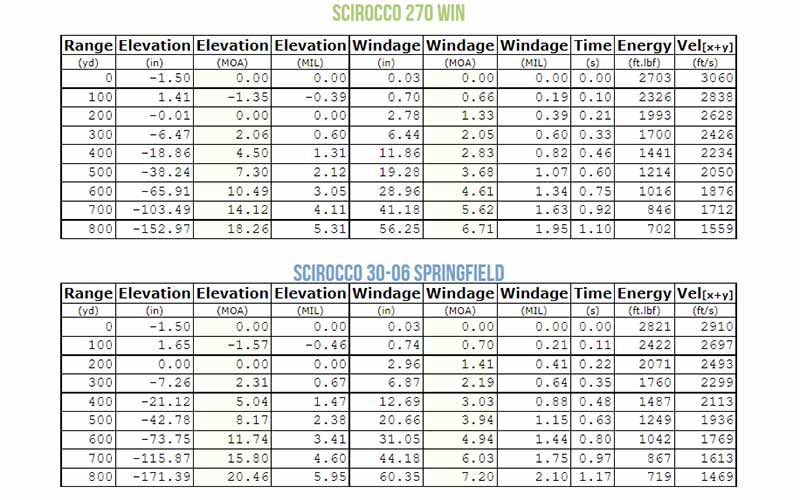
As you can see, the .270 Winchester load begins with a higher muzzle velocity than the .30-06 and retains its lead at 800 yards. The data also shows that .270 Winchester has less drop, is less affected by wind and reaches its target faster than .30-06 at every range listed.
The trajectory graph tells a similar story.
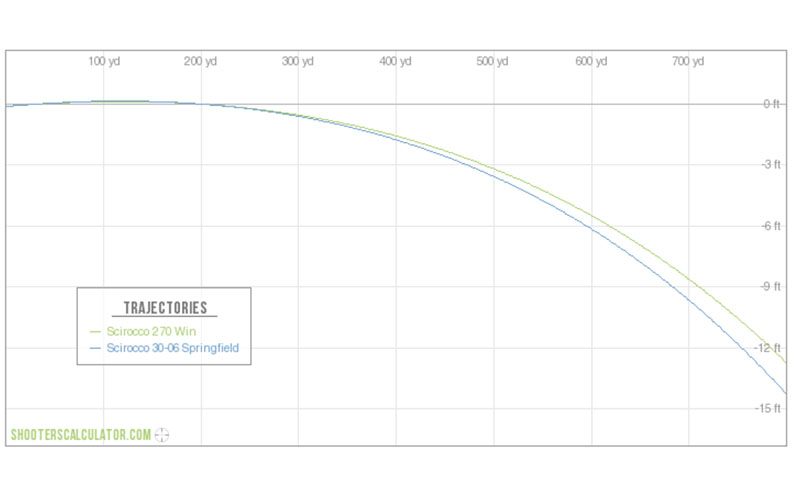
When comparing modern, heavy-for-caliber, high-BC bullets, the equation starts to change. Here’s a comparison between Winchester's Expedition 150-grain Nosler AccuBond LR load of .270 Winchester and Remington’s 150-grain .300 Win. Mag. Core-Lokt load.
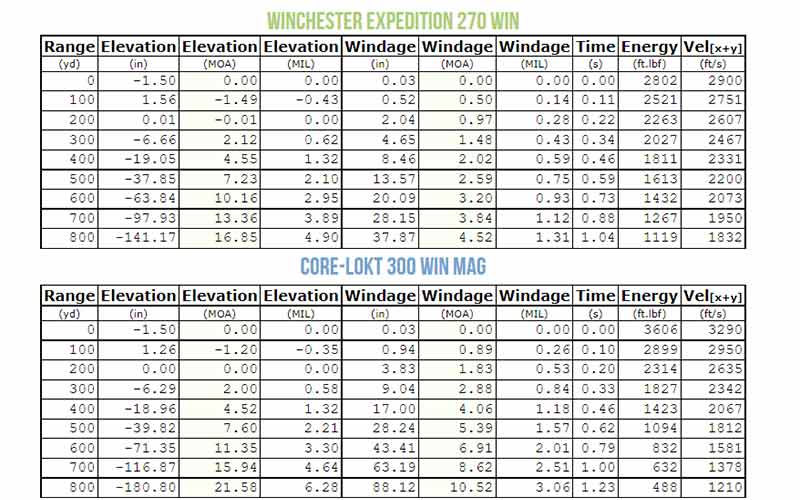
These tables show that while the two cartridges experience a similar amount of drop out to 500 yards, beyond that .300 Win. Mag. starts to sink like a stone in comparison. .300 Win. Mag. is significantly more affected by wind as well, and that starts happening much sooner than the difference in drop rate.
As you can see, some loads of .270 Winchester ammo are capable of doing everything that .300 Win Mag can…and more.
It shows that when using good quality bullets, even smaller caliber projectiles can hit as hard if not harder than average ones of bigger calibers.
So, let's say you already had a .270 Winchester rifle and wanted to shop for some ammo. What are the best loads to get?
5 Outstanding Choices Of .270 Winchester Ammo
Federal Premium Nosler Partition 130-Grain
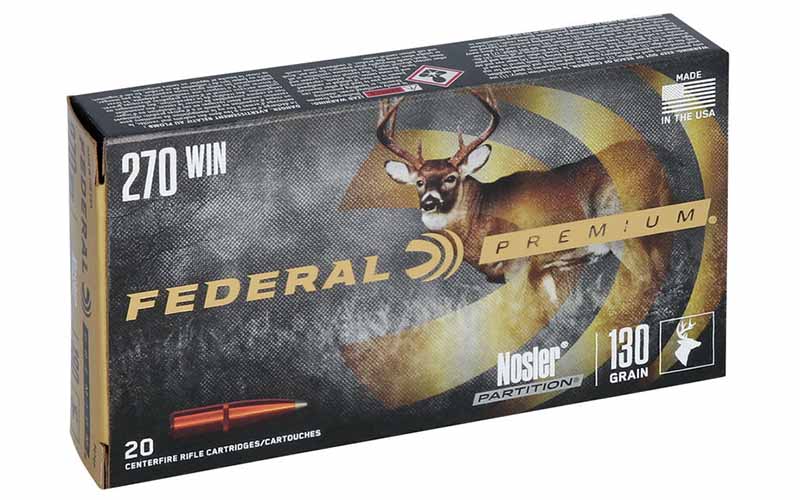
Classics become classics because they just work too darn well.
Jack O'Connor's favorite handload was a 130-grain Nosler Partition loaded to 3,100 fps, and he harvested game all over the world with it. This load is a game-getter without question and will do what you need it to do as long as you do your job as a marksman. Perhaps a little light for elk, moose or black bear, but easily one of the finest deer, sheep and pronghorn loads ever made.
Bullet type: Jacketed soft point
Grain weight: 130
Muzzle velocity: 3,060 fps
Muzzle energy: 2,703 foot-pounds
G1 BC: 0.416
SD: 0.242
MSRP: $58.99 per box of 20
Hornady 145-Grain ELD-X
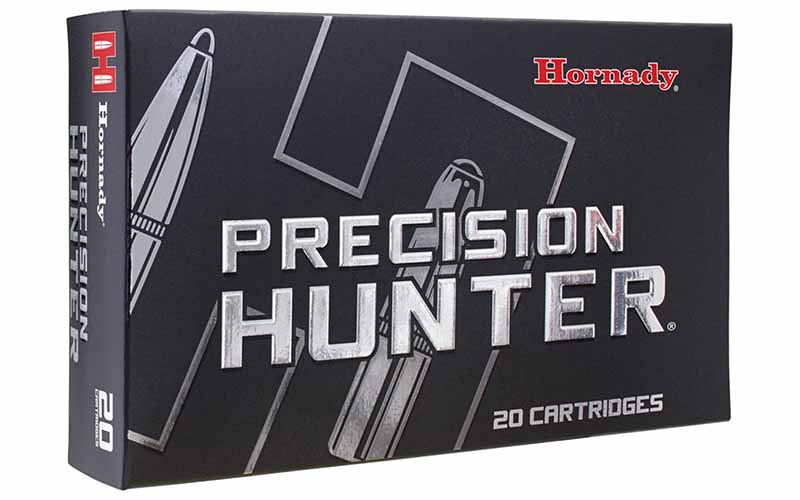
The ELD (Extremely Low Drag) bullet is a modern, aerodynamic bullet designed for longer-range hunting. The 145-grain load in .270 Winchester is a good choice for a do-it-all hunting load. While on the light side for moose or black bears, you will have no issues with good placement.
Bullet type: Tipped hollow point
Grain weight: 145
Muzzle velocity: 2,970 fps
Muzzle energy: 2,840 foot-pounds
G1 BC: 0.536
SD: 0.270
MSRP: ~$50 per box of 20
Remington Core-Lokt 130-Grain
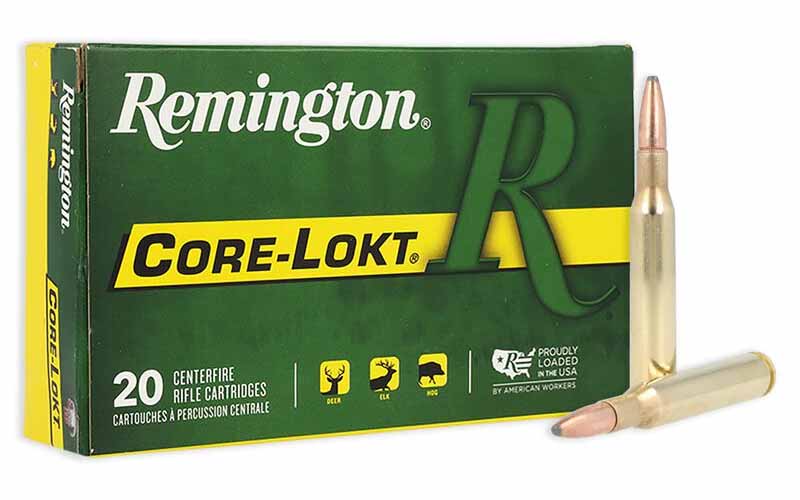
Good ol' Core-Lokt is about as cheap as .270 Winchester gets. Cheap range ammunition is few and far between in this caliber unless you roll your own. It may not be the best long-range cartridge out there, but inside of 400 yards, Core-Lokt has always performed admirably.
Bullet type: Jacketed soft point
Grain weight: 130
Muzzle velocity: 3,060 fps
Muzzle energy: 2,702 foot-pounds
G1 BC: 0.336
SD: Unadvertised
MSRP: $35.99 per box of 20
Winchester Expedition Big Game Long Range 150-Gr Nosler AccuBond LR
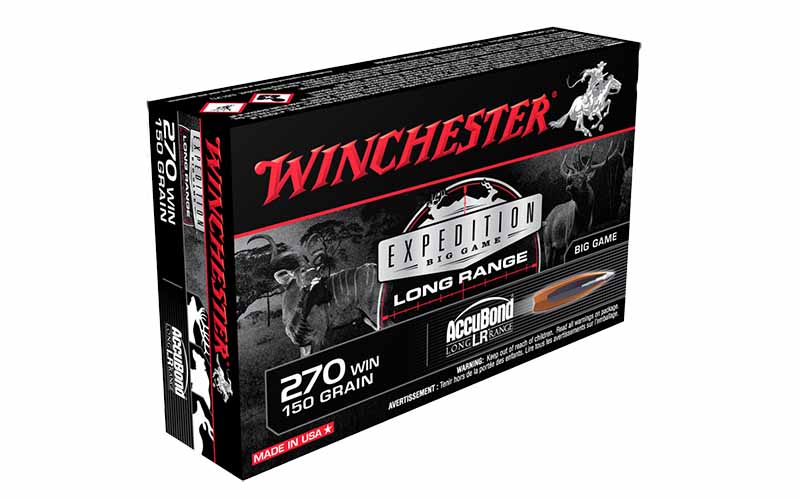
Another modern hunting bullet that makes a good case for itself as a do-it-all load with serious legs is Winchester's Expedition Big Game Long Range (could they use more superlatives?!) load. It's loaded with 150-grain Nosler AccuBond LR bullets, with an insane G1 BC of .625. If you wanted a long-range hunting load for everything short of grizzly bears…this is it.
Bullet type: Tipped hollow point
Grain weight: 150
Muzzle velocity: 2,900 fps
Muzzle energy: 2,801 foot-pounds
G1 BC: 0.625
SD: 0.279
MSRP: ~$52.00 per box of 20
Federal Fusion 150-Grain Bonded Soft Point
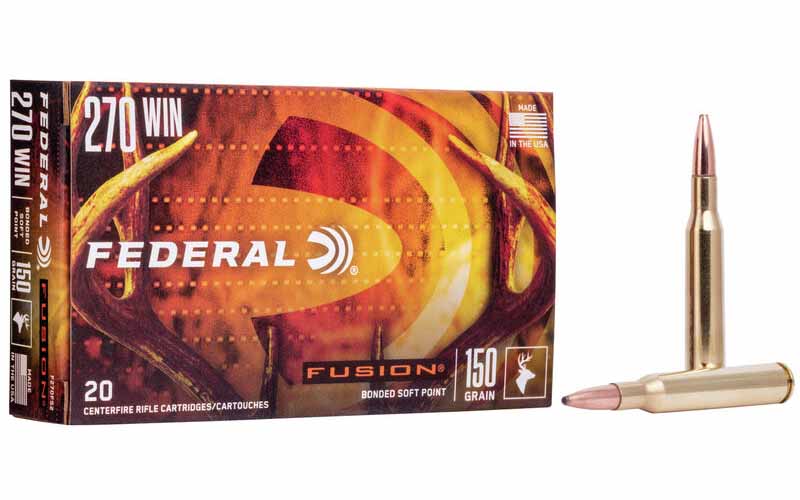
If you wanted a more premium bullet without as premium a price tag, Federal Fusion is a good candidate. The 150-grain bonded soft point load will provide good expansion, making it a good pick for most types of game.
Bullet type: Jacketed soft point
Grain weight: 150
Muzzle velocity: 2,850 fps
Muzzle energy: 2,705 foot-pounds
G1 BC: 0.471
SD: Unadvertised
MSRP: $44.99 per box of 20
Raise Your Ammo IQ:
- Beyond The 6.5 Creedmoor: The Other 6.5 Cartridges
- The Lonesome Story Of The Long-Lost 8mm
- Why The .300 H&H Magnum Still Endures
- .350 Legend Vs .450 Bushmaster: Does One Win Out For Hunting?

Next Step: Get your FREE Printable Target Pack
Enhance your shooting precision with our 62 MOA Targets, perfect for rifles and handguns. Crafted in collaboration with Storm Tactical for accuracy and versatility.
Subscribe to the Gun Digest email newsletter and get your downloadable target pack sent straight to your inbox. Stay updated with the latest firearms info in the industry.

![Best Concealed Carry Guns In 2025 [Field Tested] Wilson Combat EDC X9S 1](https://gundigest.com/wp-content/uploads/Wilson-Combat-EDC-X9S-1-324x160.jpg)


![Best 9mm Carbine: Affordable PCCs [Tested] Ruger Carbine Shooting](https://gundigest.com/wp-content/uploads/Ruger-Carbine-Shooting-100x70.jpg)
![Best AR-15: Top Options Available Today [Field Tested] Harrington and Richardson PSA XM177E2 feature](https://gundigest.com/wp-content/uploads/Harrington-and-Richardson-PSA-XM177E2-feature-100x70.jpg)

The .270 win is an excelent hunting cartridge, however the article is biased, as the author when comparing it with the .300 win mag is choosing two very different bullets. The right thing to do would be comparing them using a similar BC for both, or at least the same bullet for both cartridges when comparing performance from bullets of the same weight.
In your paragraph about longer range high bc bullets you mention 170 and 175 gr projectiles. I have no experience to back it up, but I recall reading numerous times that 270 Win factory twist rates are such that it won’t adequately stabilize any bullet over 150gr. That said, you won’t find a bigger 270 backer than me. I find the 130 gr load just perfect for long shots at whitetails across my farm’s large hay fields.